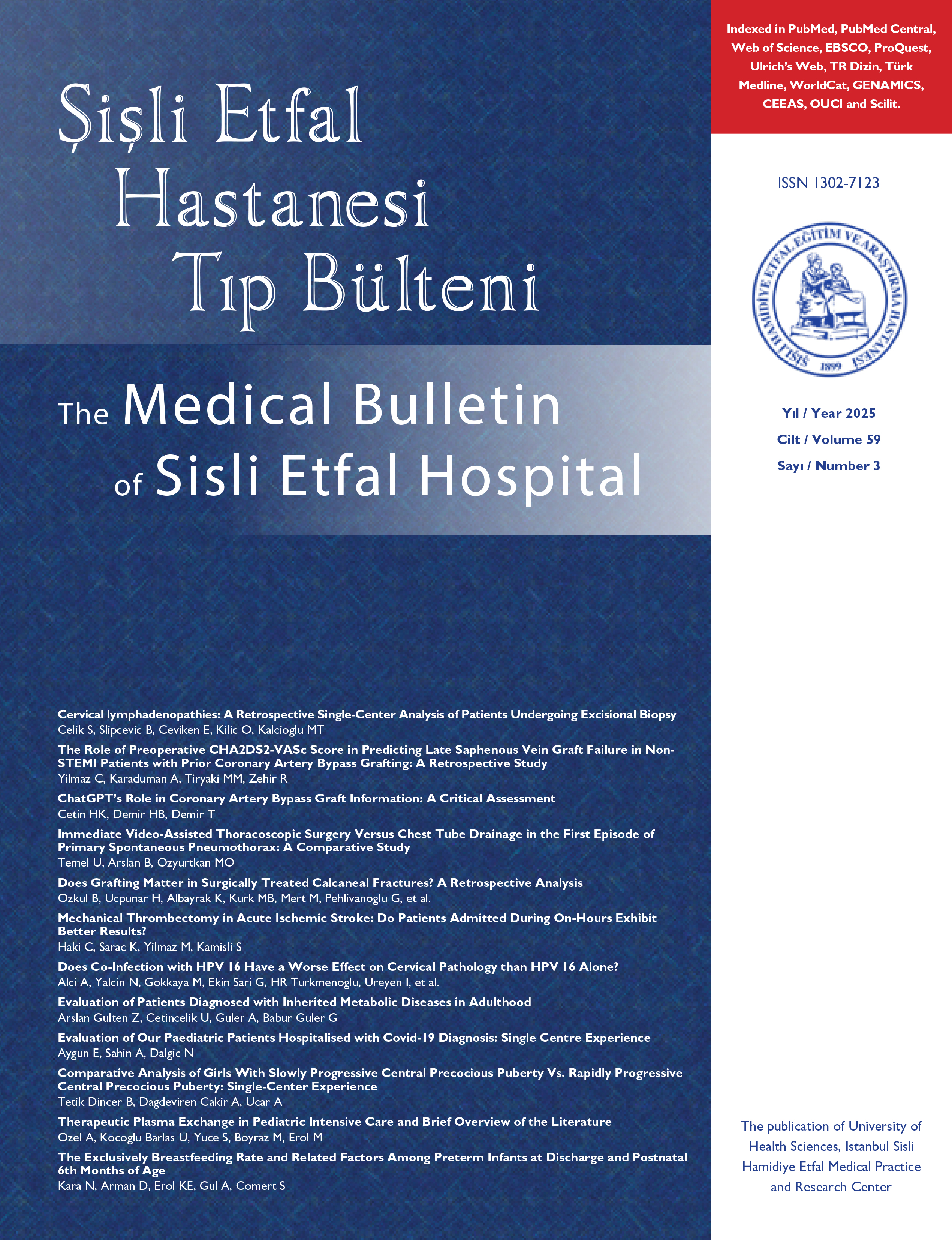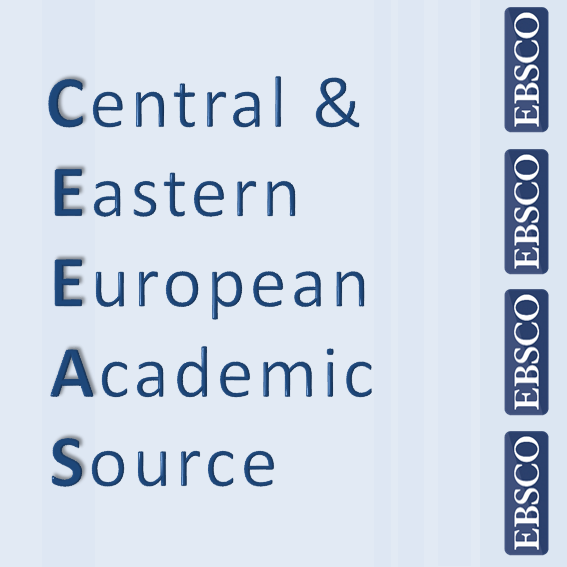
Endovascular Treatment in Symptomatic Intracranial Artery Stenosis: Experience from Two Centers
Eyup Camurcuoglu1, Mehmet Tahtabasi2, Umut Erdem3, Ahmet Serdar Ozdemir4, Veysel Kaya41Department of Radiology, Sanliurfa Training and Research Hospital, Sanliurfa, Türkiye2Department of Radiology, University of Health Sciences Türkiye, Mehmet Akif Inan Training and Research Hospital, Sanliurfa, Türkiye
3Department of Radiology, University of Health Sciences Türkiye, Sisli Hamidiye Etfal Training and Research Hospital, Istanbul, Türkiye
4Department of Radiology, Harran University Faculty of Medicine, Sanliurfa, Türkiye
Objectives: To assess the efficacy of endovascular treatment and clinical outcomes in individuals with symptomatic intracranial
stenosis who had not responded adequately to medical intervention.
Methods: The study included 32 patients who received endovascular treatment due to high-grade (70%-99% severity) intracranial atherosclerotic stenosis from December 2021 to December 2023. The patients had not experienced any acute ischemic or hemorrhagic infarction within the last three weeks, had a Modified Rankin Scale score of ≤3 at baseline, and developed a transient ischemic attack or non-disabling stroke despite having received the best medical treatment. Technical and clinical success, mortality, and complication rates were recorded.
Results: Of the 32 patients included in the study, 62.5% (n=20) were male, and the mean age was 66.4±10.09 years. Stenting was performed on the intracranial internal carotid artery in 43.8% (n=14) of the patients, the intradural vertebral artery in 37.5% (n=12), the middle cerebral artery in 12.5% (n=4), and the basilar artery in 6.3% (n=2). The technical success rate was 100%, and the clinical success rate was 87.5%. The mean degree of stenosis before the procedure was 91.7±6.3%, and the degree of residual stenosis after the procedure was 22.1±4.7%. The Neuroform Atlas® stent system was used in 18 cases (56.3%), Credo® stents in eight (25%), coronary balloon-expandable stents in four (12.5%), and the LVIS® stent system in two (6.3%). Twenty-eight (87.5%) patients did not have any symptoms in the first 30 days, while two (6.2%) patients had an ischemic stroke, one (3.1%) patient had a hemorrhagic stroke, and one (3.1%) died.
Conclusion: Endovascular treatment in carefully selected patients, a tailored selection of treatment subtypes, and an experienced multidisciplinary team overseeing the patient before, during, and after the procedure have the potential to provide safe and effective treatment for patients with symptomatic intracranial atherosclerotic stenosis.
Semptomatik İntrakranyal Arter Darlığında Endovasküler Tedavi: İki Merkez Deneyimi
Eyup Camurcuoglu1, Mehmet Tahtabasi2, Umut Erdem3, Ahmet Serdar Ozdemir4, Veysel Kaya41Şanlıurfa Eğitim ve Araştırma Hastanesi, Radyoloji Kliniği, Şanlıurfa2Türkiye Sağlık Bilimleri Üniversitesi, Mehmet Akif İnan Eğitim ve Araştırma Hastanesi, Radyoloji Kliniği, Şanlıurfa
3Türkiye Sağlık Bilimleri Üniversitesi, Şişli Hamidiye Etfal Eğitim ve Araştırma Hastanesi, Radyoloji Kliniği, İstanbul
4Harran Üniversitesi Tıp Fakültesi, Radyoloji Anabilim Dalı, Şanlıurfa
Amaç: Çalışmamız, semptomatik intrakraniyal stenozu olan ve medikal tedaviye yeterli yanıt vermeyen hastalarda endovasküler tedavinin etkinliğini ve klinik sonuçlarını değerlendirmeyi amaçlamaktadır.
Gereçler ve Yöntemler: Aralık 2021 ile Aralık 2023 tarihleri arasında yüksek dereceli (%70-%99 şiddetinde) intrakranyal aterosklerotik darlık tespit edilen, son 3 hafta içerisinde akut iskemik veya hemorajik enfarkt geçirmeyen, başlangıçta modifiye edilmiş Rankin Skalası (mRS) ≤3 olan, en iyi medikal tedavi almasına rağmen GİA veya non-disabling stroke geçiren majör intrakranyal arter stenozu olup endovasküler tedavi uygulanan 32 hasta çalışmaya dahil edildi. Teknik ve klinik başarı oranları, mortalite ve komplikasyon oranları kaydedildi.
Sonuçlar: Calismaya dahil edilen 32 hastanın %62.5i (n=20) erkek, yaşlari 66.4 ± 10,09 yıl idi. Hastaların %43.8 (n=14)i intrakranial internal karotid arterde, %37.5 (n=12)I intradural vertebral arterde, %12.5 (n=4) orta serebral arterde ve %6.3 (n=2)'ü baziler arterde idi. Teknik başarı oranı %100, Klinik basari %87.5 idi. İşlem öncesi stenozun derecesi ortalama %91.7 ± 6.3, işlem sonrası rezidu stenoz ise %22.1 ± 4.7 idi. Kullanılan stentler: neuroform atlas 18 adet (%56.3), credo 8 adet (%25), koroner balon ekspandable 4 adet (%12.5) ve LVIS 2 adet (%6.3).Hastalarin 28(%87,5) inde Ilk 30 gün içerisinde herhangi bir sepmtom olmadi. 2 (%6.2) hastada iskemik inme, 1 (%3.1) hastada hemorajik inme ve 1 (%3.1) hastada mortalite oldu.
Çıkarımlar: Özenle seçilmiş hastalarda endovasküler tedavi, endovasküler tedavi alt tiplerinin kişiye özel seçimi ve hastayı işlem öncesi, işlem sırasında ve işlem sonrası dönemde yöneten deneyimli multidisipliner bir ekip, semptomatik ICAS olan hastaların güvenli ve etkili tedavisini sağlama potansiyeline sahiptir. (SETB-2024-04-063)
Manuscript Language: English



















